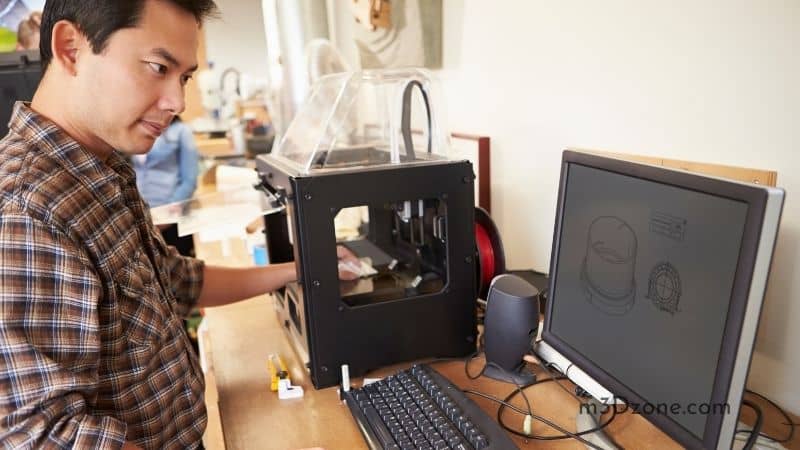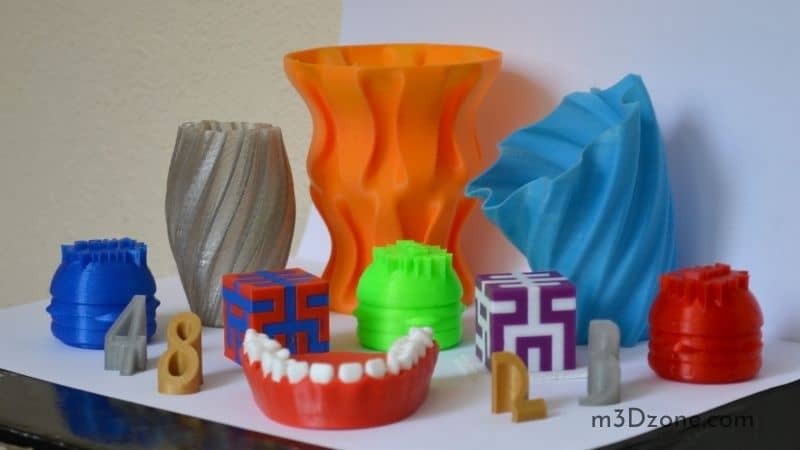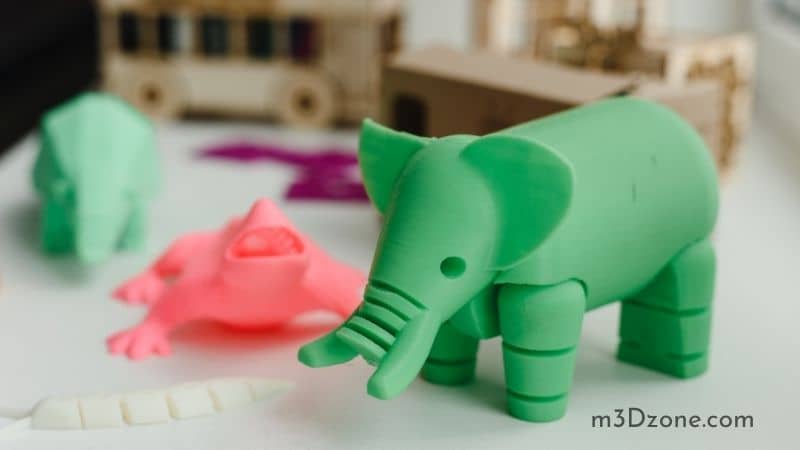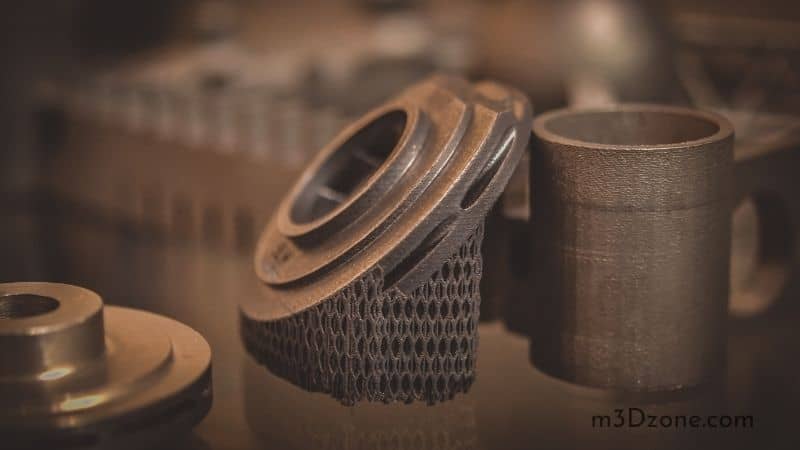Yes! You should invest in a 3D printer because it’s a good investment. Using your creativity, you may use a 3D printer to print things from flower pots to low-cost prototypes of parts.
You’ll find that it’s easy to use your open-source 3D printer to print stuff as a hobby.

A 3D printer gives you options to make a variety of items through this new technology. As you create these things you want, instead of spending money buying them, you make them yourself.
Quick Navigation
Initially, to make anything using plastic you had to go to companies or a manufacturer that would charge exorbitant amounts. Now, you can 3D print it at a low price within the comfort of your home in a matter of a few hours.
Therefore 3D printers remain to be a worthwhile investment. Keep reading this comprehensive article on why you should invest in a 3D printer for more information.
Why Should You Invest In A 3D Printer?
Let’s dive into some benefits of having a 3D printer.
1. Improving Creativity
The use of a 3D printer enables you to learn and test the limits of your creativity.

It’s about finding new solutions to old challenges and participating in an ever-changing and growing field of new technology.
It’s essential to use a 3D printer as it nurtures creativity in an individual. It can be a way to enhance a child’s imagination in designing and then printing it for usage.
Industry players appreciate that 3D printers enhance and have overstretched the limit of creativity. It’s because you may print almost anything you like. For example, they decorate a flower pot, chandelier interiors. Fixing broken handles or missing parts may need printing.
A 3D printer may be a utility and a cost-effective tool that many investors may ostensibly reduce the costs of manufacturing plastic items.
2. Educating Children
Research attests that allowing children to learn by carrying out tasks and putting their hands on physical items increases retention ability relative to merely reading alone.
Using 3D printers, children can print models that illustrate complex concepts such as atoms and planets. They can also publish simple things like puzzles and tools to encourage problem-solving skills.
3D models help children grasp abstract models by being able to take part in the manufacturing of objects. Taking part in the manufacturing of objects also inspires additional learning and creativity.
You might like: The 6 Best 3D Pen for Kids
3. 3D Printing Can Be Environmentally Sustainable
-
Additive Manufacturing
Using additive manufacturing in any product development process enables less plastic filament than other manufacturing methods.
The 3D printing industry consists of companies that provide products and services that manufacture a range of products. 3D printers create physical objects from digital designs.
The 3D printing process works by laying down thin layers of plastic material in powdered or liquid form. Layers eventually cool down to form the desired physical objects.
Additive manufacturing also helps save on shipping costs and eliminates single-use waste such as packaging. By 3D printing an item you may have otherwise ordered, you save fuel on delivery, reducing emissions. Fewer emissions mean reduced environmental impact.
You can also utilize 3D printing filaments comprising waste plastics or recycle your filaments whenever possible.
There exist numerous environmentally and user-friendly 3D printing materials that you can use to ensure the success of the printing process. These materials include the widely available hemp, soy, seaweed, wood, fiber, and filaments made from coconut and oyster.
-
Industrial Manufacturing
3D additive manufacturing accounts for most of the processes in the automotive industry. Even a market leader such as Toyota, among several other sectors, is one example of how widespread additive manufacturing applies in car manufacturing.
Companies in several industries use these new technologies to fix replacement parts to reduce unnecessary costs.
4. It’s Fun
As a 3D user, you can do a lot of exciting things using your 3D printer. 3D enthusiasts create their action figures, chess boards, tabletop games, and cross bowls as part of their 3D printing stocks.
You may derive a lot of pleasure by researching cost-efficient machines and investigating the most popular and user-friendly CAD software to use.

Learning new things also stimulates your mind, and the level of creativity involved stimulates your mind to release the feel happy hormone endorphins that reward pleasure centers in your brain.
Invite your family and friends to join you in this hobby. Consider creating an object of something you love or go with their choice and share with them as you print the image into reality.
5. It Saves Time and Money
Fixing broken parts of essential items, especially furniture and tools, can be pretty expensive. You may need to make orders for the spare parts from companies. Sometimes you may check out prizes from more than three companies worldwide to reduce costs.
If you consider the cost of buying an item from a company located abroad, in Europe, or the far-East countries of the world like Japan, you realize that it becomes an expensive investment.
The unpredictability of the exchange rates, not to mention the high shipping cost, haunts most customers in the long run. Thus, with the benefit of a 3D printer, you’re bound to save yourself from this expensive route to fix broken tour items.
Using the 3D model technology will enable you to fix your broken items at the minimum cost while saving time, and 3D printing takes a matter of hours.
6. Making Money
Are you looking for a “side hustle”? 3D printing may end up as a big business to you. While 3D printing proves to be educational, rewarding, and fun, It can also be an intelligent way of making money.
If you believe and work passionately on it, you may end up transforming your hobby into a rewarding company over your lifetime.
Reasons That Make 3D Printing Technology Attractive to Investors
3D printing has emerged as a real game-changer for industrial manufacturing. The advancement of 3D printing technology has stirred immense interest among investors interested in funding it worldwide.
Investor’s attraction can be attributed to the fact that they can apply technology in numerous manufacturing endeavors such as prototyping, tooling, and end products.
At the moment, 3D printing represents only a negligible percentage of the enormous manufacturing industry budget in the US which runs into $12 trillion. However, this has not stopped investors and funders who see massive potential in additive manufacturing exponentially.
The additive manufacturing industry experiences a massive revival, and these technological advancements resonate well with company investors. So, investors trust that putting their faith and funds in 3D printing remains a worthwhile endeavor.

Demanding, high-value industries like aerospace, automotive, and medical manufacturing install both desktop and industrial, printing plastic materials and metals. Thus, high-level 3D printing in these demanding industries serves as a major attraction for investors and funders. There are even 3D-printed houses all over the world already.
High business valuations, steadily rising investment, and a prospective booming business leave investors gravitating towards 3D printing technology and firms that deploy its usage.
Using 3D Printing For Other Hobbies
You can apply 3D printing technologies as a hobbyist in many other ways.
-
Rapid Development of Ideas
Creating, designing, and drawing an idea in apps may take several days or weeks. Therefore, it has never been an enjoyable experience in the past. But with 3D printing, the future remains bright as 3D printing has changed life forever.
With 3D printers, you’re bound to design and produce a prototype on the same day, giving you a new experience. You don’t need to wait for days anymore to create a prototype. You can always try your ideas and re-adjust them to get the best prototype on the same day.
-
Replacing Small Parts
One of the most stressful experiences hobbyists talk about has been the effort and time taken to replace or repair a small broken part. However, the emergence of 3D printing changed it for the better.
Now, you may load the design for a replacement part on your computer and print out the replacement. So, replacing small or hard-to-find broken parts takes little time to become more efficient.
-
Testing Design For Strength and Function
You have the benefit of testing your 3D model design repeatedly until you figure out precisely what you want.
Unfortunately, drawings and 3D modeling can never show you possible production challenges. You’re only capable of solving this challenge when you design and produce a prototype. With a prototype, you can make an informed judgment of your object instead of guessing.
-
Real-Time Production
3D printing provides exciting options to hobbyists – the most interesting one is producing objects in real-time. As a team, 3D printing allows you to sit and work on a design.
Once complete, you print the prototype and make the desired changes before publishing the new product. You may execute all these processes in a single real-time session.
-
Replacing Obsolete Parts
Having a small part of an obsolete object or machine break down can provide you with the most stressful experiences ever. You may spend hours on the internet searching for a possible replacement in vain.
3D printing technology provides you with a solution as you only need to design your replacement on a computer and print it.
Traditional Manufacturing Methods
Traditional manufacturing processes use a subtractive method of manufacturing. It proves to be the complete opposite of the additive manufacturing method.
The subtractive process of manufacturing associated with a traditional manufacturing method involves removing blocks of materials to create desired shapes. It’s a departure from the additive manufacturing method that adds layers of plastic material to form selected objects.
An excellent example of a subtractive process can be seen when cutting wood into a proper shape. You must remove chunks of wood to achieve your desired shape.
Traditional manufacturing processes have their fair share of disadvantages as compared to the additive manufacturing process.
For instance, you can’t create complex geometries using traditional manufacturing processes. On the contrary, the additive process guarantees the creation of complex geometries.
The cost of manufacturing complex parts remains high in traditional manufacturing processes. On the contrary, it’s low with the additive manufacturing process.
A lot of material wastage in the form of by-products remains the norm with traditional manufacturing. But additive manufacturing accounts for minimal wastage in terms of plastic material.
The additive process brought about the advantage of customizing products. At the same time, the traditional manufacturing process can only produce mass, identical but non-customized products.
The additive manufacturing methods ensure that manufacturing devices can be decentralized so that the manufacturing of products happens closer to the end-user. While the traditional manufacturing process centralizes the manufacturing devices in large factories hence increasing logistical costs.
Is 3D Printing an Expensive Hobby?
As much as the term “expensive” remains subjective for different 3D printing hobbyists, it’s important to consider personal data on finances. Though, looking at the 3D printing history will make you conclude that it has become cheaper to 3D print.
The first 3D printers used to cost about $100,000, and now, it’s hard to believe that fifty years down the line, you can get an entry-level 3D printer at only $200. Thus, you may consider it cheap.
After buying the printer, you may need to reflect on the operating cost as well. You will need material like plastic filament and resin to optimize the working of your printer.
Another cost consideration will come when you want to buy essential 3D printing protective gear.
Conclusion
Investing in a 3D printer evokes considerable thought and planning. This article serves as a comprehensive guide that you can use to navigate this challenge and make an informed decision on 3D printers and the fast-growing 3D printing industry.
From the reasons you may invest in 3D printing, the 3D printing methods, the cost of 3D printers, and the differences in additive and traditional manufacturing processes, this guide will be helpful.
Recommended Reading
What Is SLS 3D Printing? Selective Laser Sintering Guide.
What is SLS 3D printing? SLS technology uses a high-power laser to sinter small polymer powder particles into a solid structure 3D model. Let's dive into it!
How Does A 3D Printer Work?
So, how does a 3D printer works? It works like an inkjet printer and is operated from a computer. Instead of ink, it uses plastic and prints in layers.
Best Ender 3 Mods & Upgrades. V2 & Pro Included
Here are some upgrades and Ender 3 mods that I have found helpful in improving print quality. Be sure to check the full article for the best upgrades to buy!
